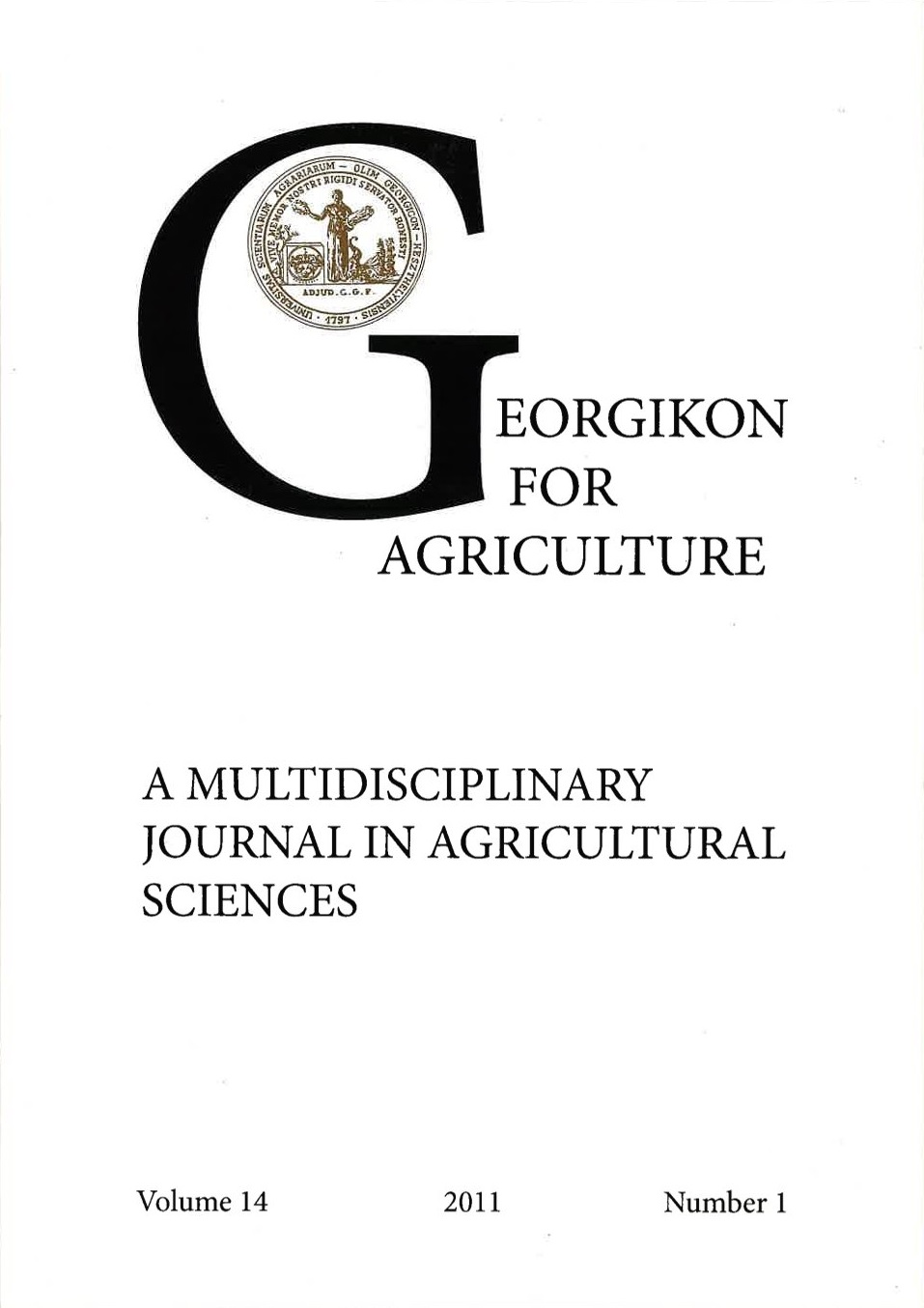Comparative study with a set of pesticides to establish eye irritancy with HET-CAM and draize test
Kulcsszavak:
chorioallantoic membrane, in vitro, rabbit, DraizeAbsztrakt
A tyúktojás chorioallantois membránját évek óta hasznáják különböző tudományok biológiai kutatásaiban, úgymint a virológiában, bakteriológiában és toxikológiában. A membrán a nyúl szeméhez hasonlóan reagál a különböző vegyi anyagok okozta káros irritációs hatásokra. Alkalmas modellnek ígérkezik az embrionálódott tyúktojás chorioallantois membránja az irritációs potenciálok meghatározásában, mivel rendkívül könnyen kezelhető és értékelhető. Az elmúlt években számos alternatív módszert dolgoztak ki a sokat bírált Draize-féle primer szemirritációs vizsgálat helyettesítésére. Ezen alternatív technikák közül az egyik legtöbbet tanulmányozott, a tyúktojás chorioallantois membránját felhasználó (HET-CAM) teszt. Vizsgálataink néhány peszticid in vitro és in vivo eredményeinek összehasonlítására irányultak. A legtöbb esetben jó korrelációt találtunk a két teszt értékei között, azonban jelenlegi állapotában még nem jelenthető ki, hogy a HETCAM teszt a Draize-féle primer szemirritációs vizsgálat kiváltására alkalmas lenne. Jelenleg, mint elővizsgálati módszer alkalmazható a kísérleti állatok számának csökkentésére.
Hivatkozások
Budai, P., Lehel, J., Tavaszi, J. and Kormos, É. 2010. HET-CAM test for determining the possible eye irritancy of pesticides. Acta Vet. Hung. 58 (3) 369–377. https://doi.org/10.1556/avet.58.2010.3.9
Budai, P. and Várnagy, L. 2000. In vitro ocular irritation toxicity study of some pesticides. Acta Vet. Hung. 48. 221–228. https://doi.org/10.1556/avet.48.2000.2.10
Draize, J. H., Woodard, G. and Calvery, H. O. 1944. Methods for the study of irritation and toxicity of stubtance applied to the skin and mucous membranes. J. Pharmac. 82. 377. https://doi.org/10.1016/S0022-3565(25)08751-8
Kalweit, S., Besoke, R., Gerner, I. and Spielmann, H. 1990. A national validation project of alternative methods to the Draize rabbit eye test. Toxicology in Vitro. 4 (4–5) 702–706. https://doi.org/10.1016/0887-2333(90)90147-L
Leighton, J., Nassauer, J. and Tchao, R. 1985. The chick embryo in toxicology: an alternative to the rabbit eye. Food and Chemical Toxicology. 23 (2) 293–298. https://doi.org/10.1016/0278-6915(85)90031-6
Luepke, N. P. and Wallat, S. 1987. HET-CAM - reproducibility studies. Alternative methods in toxicology. 5. 353–363.
OECD 2002. OECD Guidelines for the Testing of Chemicals No. 405: Acute Eye Irritation/Corrosion. 14 pp. Organisation for Economic Cooperation and Development, Paris, France.
Sina, J. F., Galer, D. M., Sussman, R. G., Gautheron, P. D., Sargent, E. V., Leong, B., Shah, P. V., Curren, R. D. and Miller, K. 1995. A collaborative evaluation of seven alternatives to the Draize eye irritation test using pharmaceutical intermediates. Fund. Appl. Toxicol. 26. 20–31. https://doi.org/10.1093/toxsci/26.1.20
Spielmann, H., Liebsh, M., Kalweit, S., Moldenhauer, F., Wirnsberger, T., Holzhütter, H. G., Schneider, B., Glaser, S., Gerner, I., Pape, W. J. W., Kreiling, R., Krauser, K., Miltenburger, H. G., Steiling, W., Luepke, N. P., Muller, N., Kreuzer, H., Murmann, P., Spengler, J., Bertram-Neis, E., Siegemund, B. and Wiebel, F. J. 1996. Results of a validation study in Germany on two in vitro alternatives to the Draize eye irritation test, the HET-CAM test and the 3T3-NRU cytotoxicity test. ATLA. 24. 741–858. https://doi.org/10.1177/026119299602400511
Tavaszi, J. and Budai, P. 2006. Toxicity study of agrochemicals on chorioallantoic membrane of the egg. Comm. Agr. Appl. Biol. Sci. 71 (2a) 101–105.
Tavaszi, J., Budai, P., Pálovics, Á. and Kismányoki, A. 2008. An alternative test battery in detecting ocular irritancy of agrochemicals. Comm. Agr. Appl. Biol. Sci. 73 (4) 891–896.
Walum, E. and Balls, M. et al. 1992. An integrated approach to the application of in vitro test systems to the hazard assessment of chemicals. ATLA. 20. 416. https://doi.org/10.1177/026119299202000307
Letöltések
Megjelent
Folyóirat szám
Rovat
License
Copyright (c) 2011 Kormos Éva, Lehel József, Haszon Klaudia

This work is licensed under a Creative Commons Attribution-NonCommercial-NoDerivatives 4.0 International License.
The articel is under the Creative Commons 4.0 standard licenc: CC-BY-NC-ND-4.0. Under the following terms: You must give appropriate credit, provide a link to the license, and indicate if changes were made. You may do so in any reasonable manner, but not in any way that suggests the licensor endorses you or your use. You may not use the material for commercial purposes. If you remix, transform, or build upon the material, you may not distribute the modified material. You may not apply legal terms or technological measures that legally restrict others from doing anything the license permits.




 Georgikon for Agriculture
Georgikon for Agriculture